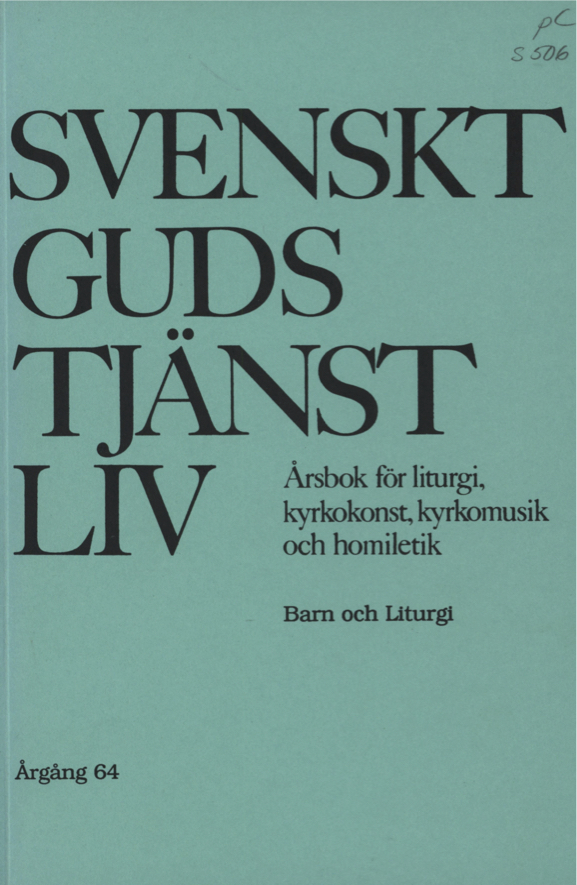Att hjälpa barnen in i svenskt gudstjänstliv. En resonerande översikt (To Help Children into the Liturgical Life of the Church of Sweden)
Abstract
Archbishop Yngve Brilioth writes in ”Svensk kyrkokunskap”, 1946: ”Sunday-school has not without difficulties been adopted into Lutheran Christianity”. One of the reasons may have been that Sunday-school had ”its origin within English Evangelical and partly Methodist tradition”. Brilioth continues: ”The specific form for Sunday-school has by degrees been remoulded. Its task to lead into the life of Church has more strongly been emphasized. The teaching has often been put into a liturgical framework and the difference between proper Sunday-school and worship for child ren has from time to time become vague.”
That view on the task of the Sunday-school has as much actuality now as it had then, as much as you can say together with Brilioth: ”The situation at present makes the develop ment of Sunday-school an unavoidable ecclesiastical task.”
In the year of 1943 the book ”Sonntagsschule als Kindergottesdienst” by Emanuel Jung was published and there he reflected on how to use the Bible in a narrative way. In the end of the sixties, however, Ronald Goldman turned earlier views upside down. He meant that ”the Bible on the whole is not a book for children”. The main hindrance was children’s anthropomorf understanding of God. Goldman’s opinion was that conversations about children’s vital questions on life should come instead.
In the late seventies, the opinion changed again. Now it was comme il faut to narrate, even stories from the Bible. Bishop Ström writes in ”Bam och familj”, 1980 (Children and Family): ”It is the biblical tale in itself that releases and saves. To comment upon texts, to talk about for example the parables of Jesus, has no purpose. Do as Jesus did, tell the story yourself!”
There are some good innovations in the new liturgy of the family Mass, e.g. absolution after the prayer for forgiveness. It was lacking before. The new prayer of thanks after the communion, however, could be changed for the better. There are lovely new hymns for children to choose among as well as means to prepare the children’s visit to the church: printed material in which the whole Mass or part of the Mass are explained, books to be used by the children before or during service and play-material to confirm the experience in church.
The directive rules which the Church of Swedens National Meeting of Bishops and the Commission for Church-life have elaborated for family-Mass make it trivial: The congregation is supposed to assemble standing in a circle around a movable table on which there are no flowers or cross. The table is to be placed in the chancel. The moment of adoration is neglected and would be better expressed if kneeling around the altar-rails came back.
(Transl: Birgitta Brodd)
Downloads
Publicerad
Nummer
Sektion
Licens
© författarna, Laurentius Petri Sällskapet för svenskt gudstjänstliv samt Artos & Norma bokförlag. Det är tillåtet att kopiera och använda material ur Svenskt Gudstjänstliv för forskningsändamål om källan anges. För övriga ändamål kontakta respektive artikelförfattare samt förlaget. Särskilda restriktioner kan gälla för bildmaterial.


